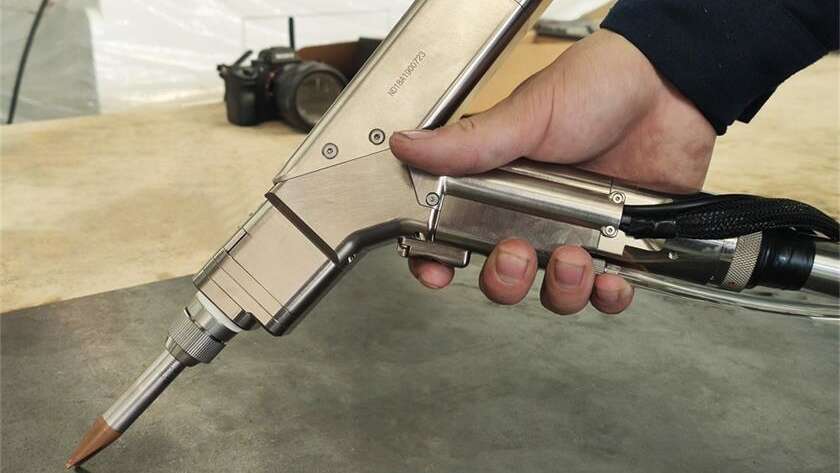08, 2020
by Oree Laser
Today the most advanced welding technology in the world is laser welding. The laser welding machine uses high-energy laser pulses to locally heat the material in a small area. The energy of the laser radiation diffuses into the material through heat conduction, and the material is melted to form a specific molten pool. It is a new type of welding method, mainly for the welding of thin-walled materials and precision parts. It can realize spot welding, stitch welding, sealed welding, etc., with high aspect ratio, small weld width, small heat affected zone, and fast welding speed , beautiful, no need to deal with or simple processing after welding, small focus spot, high positioning accuracy, easy to realize automation. What materials can the laser welding machine weld?

1. Die steel
The laser welding machine can be used to weld S136, SKD-11, NAK80, 8407, 718, 738, H13, P20, W302, 2344 and other types of die steel, and the welding effect is better.
2. Carbon steel
The laser welding machine welds carbon steel with good results. The welding quality depends on the content of impurities. In order to obtain good welding quality, preheating is required when the carbon content exceeds 0.25%. As the carbon content increases, the sensitivity of weld cracks and notches will increase. Both medium and high carbon steel and ordinary alloy steel can be well laser welded, but preheating and post-welding treatment are required to eliminate stress and avoid cracks.
3. Alloy steel
For laser welding of low-alloy high-strength steel, as long as the selected welding parameters are appropriate, a joint with mechanical properties equivalent to the base metal can be obtained.
4. Stainless steel
Because the welding speed and heat-affected zone of the laser welding machine are small, the overheating phenomenon and the large linear expansion coefficient of the stainless steel welding are alleviated, and the welding seam has no defects such as pores and inclusions. Compared with carbon steel, stainless steel is easier to obtain deep penetration narrow welds due to its low thermal conductivity, high energy absorption rate and melting efficiency. Welding thin plates with a low-power laser welding machine can obtain a well-formed joint with a smooth and beautiful weld seam.
5. Copper and copper alloy
Welding copper and copper alloys is prone to problems of infusion and incomplete penetration. Therefore, a heat source with concentrated energy and high power should be used with preheating measures; When the thickness of the workpiece is thin or the structural rigidity is small, and there are no measures to prevent deformation, it is easy to produce large deformation after welding, and when the welding joint is subject to large rigid constraints, welding stress is likely to occur; It is also prone to thermal cracks when welding copper and copper alloys; Porosity is a common defect in copper and copper alloy welding.
6. Aluminum and aluminum alloy
Aluminum and aluminum alloys are highly reflective materials. When welding aluminum and its alloys, as the temperature increases, the solubility of hydrogen in aluminum increases sharply, and the dissolved hydrogen becomes a source of defects in the weld, and there are many pores in the weld. , And there may be a cavity in the root during deep penetration welding, and the weld bead formation is poor.
The characteristics of metal materials determine the welding process. The following analyzes the precautions when metal laser welding:
1. The cooling rate of metal materials is fast, which is determined by the carbon content in the metal, which has an impact on the embrittlement, microcracks and fatigue strength of the metal materials.
2. During the welding process, the highly volatile alloy elements in the metal alloy volatilize from the molten pool, which will cause the generation of pores and may also cause undercuts.
3. When welding carbon steel materials, the carbon content of the material should be less than 2%. When the carbon content is higher than 3%, the difficulty of laser welding will increase, the tendency of cold cracks will increase, and the fatigue and bottom of the material will increase. For the brittle fracture tendency under the condition of grains, a certain amount of shrinkage of the weld is considered in the joint design, which is beneficial to reduce the residual stress and crack tendency of the weld and the heat-affected zone.
4. When the laser welding machine has a metal with a carbon content of more than 3% and a metal with a carbon content of less than 3%, the form of a paranoid weld can be used to limit the transformation of martensite, which can eliminate stress and reduce cracks. It can not only reduce the quenching rate but also reduce the tendency of cracks.
5. Whether it is pulsed laser welding or continuous laser welding, the general pulse laser welding machine can reduce the heat input, but also reduce the generation of thermal cracks and the deformation of the workpiece.
Professional Laser Cutting Machine Manufacturer - OreeLaser